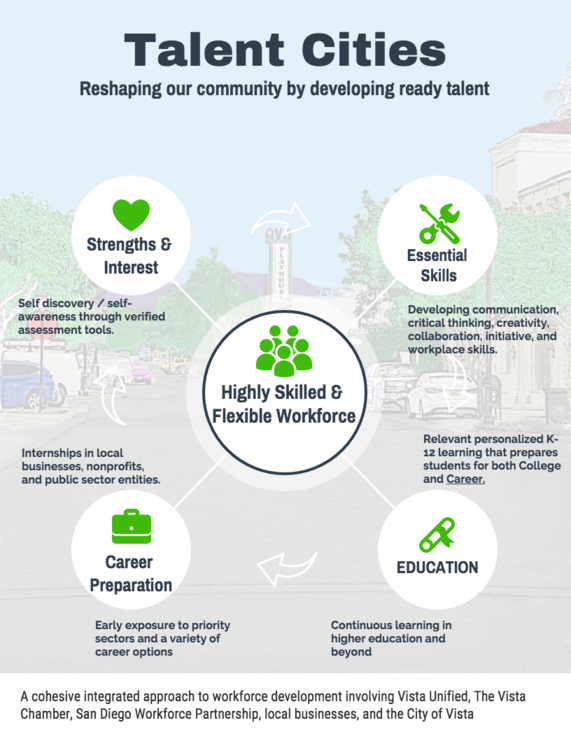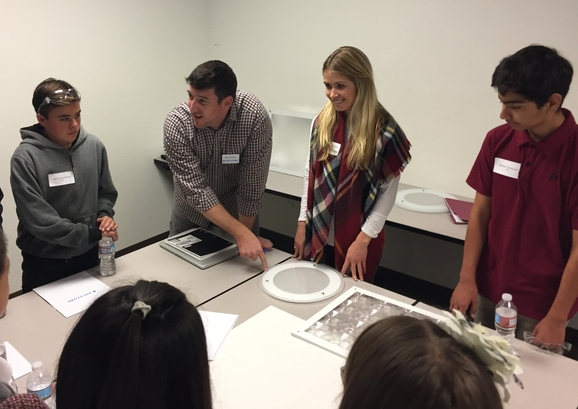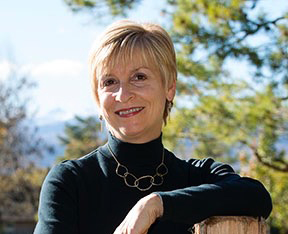New Designs for School
It Takes a Village: Talent Cities at Vista Unified
Topics

We’ve all had the experience of truly purposeful, authentic learning and know how valuable it is. Educators are taking the best of what we know about learning, student support, effective instruction, and interpersonal skill-building to completely reimagine schools so that students experience that kind of purposeful learning all day, every day.
Practitioner’s Guide to Next Gen Learning
Dropping out is not a high school problem; it’s a middle school problem. How do we hook students early and show that what they are learning is relevant? By leveraging strong community partnerships to provide real-world learning.
Dropping out is not a high school problem; it’s a middle school problem. How do we hook students early and show that what they are learning is relevant?
That’s how Robert Crowell, an elementary educator who has directed the community partnerships at Vista Unified School District in Vista, CA, for the last three years, sums up the thinking behind Talent Cities. With a mission to expand young people’s vision of themselves in the world of work, Talent Cities is a partnership between Vista Unified School District, New Learning Ventures, the Vista Chamber of Commerce, and local businesses.
This edition of NGLC’s Practitioner’s Guide to Next Gen Learning is the second of a two-part series about leveraging strong community partnerships to provide real-world learning to students in middle and high school. The first part featured St. Vrain Valley School District in Longmont, CO, and Da Vinci Schools in Los Angeles, CA. For the second part, we focus on the work of educators at Vista Unified Schools and share their responses to these questions:
- Why do you partner with external organizations?
- What do those partnerships look like—how does it work?
- What advice would you give to other schools and systems just getting started with real-world partnerships?
- What do those partnerships look like—how does it work?
- What advice would you give to other schools and systems just getting started with real-world partnerships?
Engaging Middle School Students in Real-World Learning
Much more than a traditional field trip, the Talent Cities program at Vista Unified connects middle school students with the workplace in meaningful and intentional ways. To illustrate, Robert points to the level of preparation that goes into each workplace site visit. In alignment with Vista’s personalized, strengths-based approach to teaching and learning, students engage in self-exploration activities and assessments to identify areas of passion and talent. They also conduct research on the priority sectors in their community to gain essential background knowledge about local industries and possible careers. This groundwork enables students to make the most of the workplace experience.

In exchange, Robert explains, local businesses get valuable analytics about their future talent pool, as well as a voice in what young people are learning and experiencing. “They get opportunities to give us feedback on the skills and dispositions students need to be work ready—essential skills like communication, working in teams, responding to feedback. When students speak to employers and employees, they can see for themselves what it takes to be successful.”
A “big hit, everything we could hope for” is how Robert describes last year’s pilot excursion to Solatube, a local company that produces eco-friendly lighting. “The students took a tour of the facility and met the CEO in a cool conference room lit by Solatube’s products. They also got to meet people in marketing, carpenters, designers.” After the tour students participated in a design challenge: one group designed a product and another developed a marketing campaign, both geared to their age group. “Students learned the design process and worked shoulder to shoulder with employees as peers. Then they got to present and explain their processes.”

Vista students design solar lighting as part of an industry challenge
In the past, he reports, if you asked students to identify occupations they might be interested in,“they could only name things like firefighter, police, doctor, lawyer. That’s pretty much it. Middle school students tend to think that everyone in a lightbulb factory is busy making light bulbs. Now they see how an interest in art or green energy can connect to a career in design and marketing. Or if you are interested in selling things, there are positions like that in just about every industry.”
Suggestions and Lessons Learned
Robert credits the Chamber of Commerce for playing an integral part in the Talent Cities program and specifically for finding partner businesses. The Chamber helped with making calls and working their contacts to line up the original partners. Then those CEOs introduced district leaders to others, expanding the partner network and building strong relationships. “They trust us,” he reports. “They know we aren’t going to waste anyone’s time.”
According to Robert, this word-of-mouth approach required organizers to make sure the experiences were really positive for both partners, the schools and the industries. As Robert puts it, they wanted the partnerships “to grow organically via volunteers” and for the word to spread from student to student and students to teachers.
Creating those positive interactions requires clear communication and planning. Robert recalls one of the early workplace trips, in which adult after adult stood before the students and gave the traditional “work hard and do your homework” speech.“Now I take a more proactive role on what the excursions should look like.”
The more hands-on, the better. To support high-quality experiences for all participants, educators now meet with the host businesses in advance to co-plan and discuss how the learning excursions can benefit both the industry and the students. The Talent Cities website also provides resources for industry partners, like this Design Challenge Planning Template.
According to Robert, whether the activities involve climbing up into a water tower for a design challenge at the city’s water department or having lunch with business leaders at an industry meet-and-greet, these real-world connections are invaluable. They help build relationships between students and the world of work, and they encourage young people to see themselves in that world.
“I’m an educator,” Robert says. “I believe in college, but we have done our students a disservice by only focusing on that. For most, college is the pathway to a career. If students can first identify what they are interested in, then all of the steps make sense and seem worth it.”
Resources
Playbook for high-school and industry partnerships from 72andSunny, a creative agency that partners with Da Vinci Schools in Los Angeles. Written for an industry audience, it includes tools for evaluating partner compatibility, types of school/industry engagement, agendas and materials for running on-site student workshops, as well as a student-facing “Hacking an Internship” guide
NGLC Learning Excursion to Vista Unified A presentation on Vista Unified’s education model and innovations, including the role of real-world learning, given during a recent NGLC Learning Excursion
Priority sectors A student-facing resource depicting the job areas that show the greatest potential for growth and job creation in San Diego County
Design challenge template A tool for businesses and industry partners to assist with planning high-quality, hands-on workplace experiences for students
Talent Cities blog post by Robert Crowell and Matt Doyle, Interim Superintendent, Vista Unified, along with Gerri Burton, New Learning Ventures, about how Talent Cities addresses the “relevance gap” in middle school
MyWays Report 10 on Wayfinding Abilities: developing students’ knowledge and capacity to successfully navigate college, career, and life opportunities and choices




